The acoustic guitar, predating its electric counterpart by centuries, boasts a vast lineage of influential instrumentalists and singer-songwriters. Compiling a list of just 50 “transcendent” acoustic players proved to be a considerable undertaking. Our selection process involved extensive deliberation to showcase a diverse range of guitar pioneers, stylists, and innovators who have, each in their unique ways, expanded the horizons of guitar music for the enrichment of all. While numerous other talented individuals across blues, country, classical, folk, jazz, pop, rock, and new age genres have significantly contributed to the modern guitar lexicon and could easily warrant inclusion in any list of top acoustic players, we believe the guitarists presented here will inspire you to explore their work through various media and, hopefully, glean valuable insights from their artistry. We certainly have!
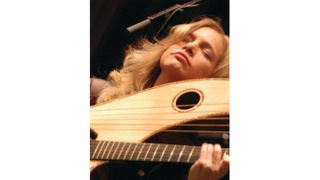
Muriel Anderson
Beyond her mastery as a finger-stylist, harp guitarist, and stylistic explorer, Muriel Anderson stands as a trailblazer as the first woman to clinch the National Fingerpicking Guitar Championship. Her commitment extends to community enrichment through the Music for Life Alliance and her role as host of Muriel Anderson’s All-Star Guitar Night, showcasing her dedication to both performance and fostering musical growth.

Badi Assad
Celebrated for her breathtaking technique and deeply emotive performances, Badi Assad was recognized by GP readers as the Best Acoustic Finger-stylist in 1995. This accolade came before a challenging period where focal dystonia threatened to curtail her career. Demonstrating remarkable resilience, she made a full recovery by 2003, marking her return with Three Guitars, a collaborative recording with Larry Coryell and John Ambercrombie. Assad’s journey is a testament to perseverance and artistic dedication.
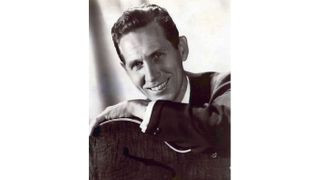
Chet Atkins
Although Chet Atkins significantly contributed to popularizing the electric guitar, his exceptional fingerpicking and contrapuntal style shone equally brightly on the acoustic guitar. Many of his albums featured tracks on both nylon and steel-string acoustics, with 1967’s Class Guitar being entirely performed on nylon-string. Irrespective of the instrument, Atkins remained a true “Certified Guitar Player,” showcasing his versatility and mastery across guitar types.
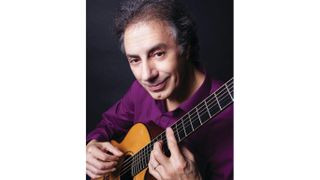
Pierre Bensusan
This guitarist of French-Algerian heritage is globally acclaimed for his unique ability to seamlessly blend diverse musical influences into his compositions. Bensusan masterfully uses his guitar to drive both melody and rhythm, often incorporating vocal improvisations to create a rich, ensemble-like performance experience for his audiences, demonstrating his innovative approach to solo acoustic guitar.

Liona Boyd
Liona Boyd’s consistent excellence led to her induction into GP’s Gallery of the Greats after winning Classical Guitarist of the Year five times. Boyd has been a dedicated advocate for classical guitar, broadening its appeal through collaborations with artists from rock, blues, and country genres. Her openness to cross-genre projects and her own battle with focal dystonia highlight her commitment and resilience in music.
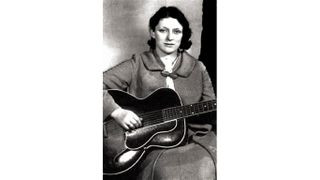
Maybelle Carter
A foundational figure in country music, “Mother” Maybelle Carter originated the influential fingerstyle technique known as the “Carter Scratch” or “Carter Family Picking.” The enduring popularity of this style is a tribute to her innovative spirit and lasting impact. Country guitar music owes a significant debt to Carter’s creativity and pioneering techniques.
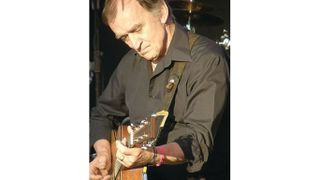
Martin Carthy
Considered a pivotal figure in the English folk revival of the 1960s, Martin Carthy’s profound talents as a guitarist, multi-instrumentalist, singer, and scholar of traditional folk music influenced notable artists like Bob Dylan and Paul Simon. He also played a key role in the emergence of influential English folk-rock bands such as the Albion Band, Fairport Convention, and Steeleye Span, marking his significant contribution to the genre.
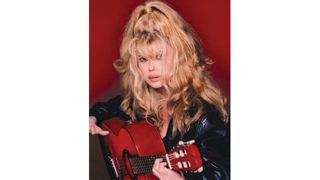
Charo
With a vibrant stage presence perfectly suited for television and concert venues, Charo’s exceptional guitar skills might have been easily overlooked. However, GP readers recognized her talent, twice voting her Best Classical Flamenco Guitarist in the World. This acknowledgment underscores her mastery and the captivating nature of her flamenco performances.
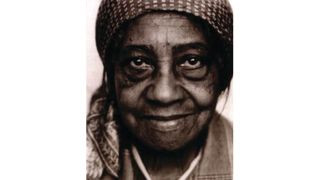
Elizabeth (Libba) Cotten
Elizabeth “Libba” Cotten’s unique guitar journey began in her 60s when she was rediscovered by the Seeger family. Playing a right-handed guitar upside down and left-handed, she developed a distinctive style, playing bass lines with her fingers and melodies with her thumb. Cotten invented the fingerpicking style known as “Cotten Picking,” a testament to her innovative approach and natural musicality.

Peppino D’Agostino
Peppino D’Agostino’s signature style incorporates open tunings and percussive techniques, which are central to his melodically rich and technically demanding compositions. A captivating solo performer, he also actively participates in the Pacific Guitar Ensemble and has collaborated with diverse musicians, including classical guitarist David Tanenbaum, drummer Jeff Campitelli, and the celebrated harpist/violinist Carlos Reyes, showcasing his versatile musical partnerships.
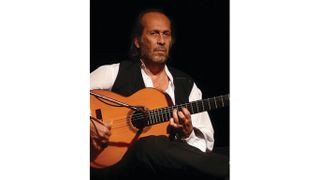
Paco de Lucia
A flamenco virtuoso, Paco de Lucia revolutionized Spanish guitar by incorporating jazz harmonies and scales into traditional flamenco strumming. His groundbreaking collaborations in the late 1970s with John McLaughlin, Al Di Meola, and Larry Coryell in duo and trio formats produced some of the most celebrated guitar recordings ever made, solidifying his status as a flamenco innovator.
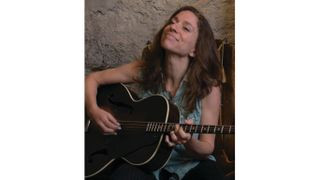
Ani DiFranco
Ani DiFranco’s widespread popularity, marked by multiple Grammy wins and nominations, is fueled by her socially conscious songwriting and dynamic percussive guitar style. She inspired a generation of singer-songwriters and encouraged players to explore her distinctive use of open and alternate tunings. Guitar Player magazine has extensively covered DiFranco’s tunings, which she openly shares with fellow musicians.
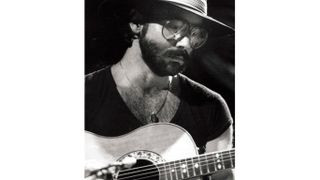
Al Di Meola
After achieving fame as the incredibly fast electric guitarist for 1970s fusion pioneers Return to Forever, Al Di Meola further captivated guitar enthusiasts with Friday Night in San Francisco. This 1981 acoustic album, featuring John McLaughlin and Paco De Lucia, cemented Di Meola’s legacy as perhaps the most influential acoustic alternate picking guitarist of all time, celebrated for his speed and precision.
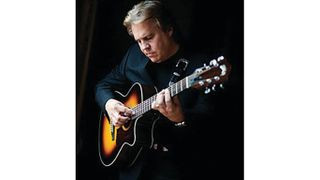
Doyle Dykes
Doyle Dykes, an exceptionally skilled guitarist, draws significant influence from Chet Atkins, yet his musical palette seems to encompass a vast array of genres he encountered throughout his career. Whether playing nylon-string or steel-string guitars, his remarkable technique, refined tone, inventive arrangements, and soulful delivery establish him as a benchmark among the world’s leading fingerstyle guitarists.
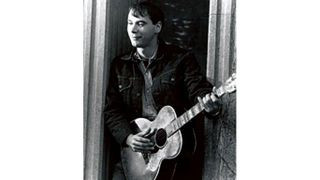
John Fahey
Often categorized as a progressive folk artist, John Fahey incorporated diverse styles—including blues, Native American music, Indian ragas, experimental dissonance, and pop—to demonstrate the versatility of traditional country and blues fingerpicking techniques. He proved these techniques could express a wide spectrum of musical ideas beyond their original genres, expanding the acoustic guitar’s expressive range.
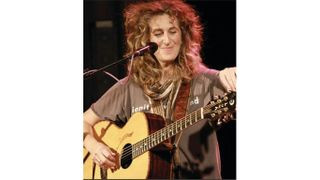
Vicki Genfan
In a field dominated by electric guitars and shredding, Vicki Genfan won Guitar Player’s 2008 Guitar Superstar competition by emphasizing composition, dynamics, and innovative percussive elements in her playing. Her victory underscored the power of acoustic guitar artistry, and she has since become a leading solo-acoustic performer, continuing to impress audiences globally.
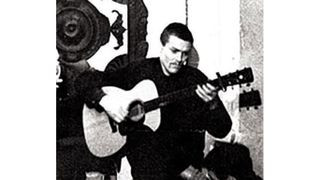
Davey Graham
Reportedly, Jimmy Page’s “White Summer/Black Mountainside” was inspired by Davey Graham’s rendition of “She Moved Through the Fair,” which he played in DADGAD tuning. This tuning became a staple in acoustic guitar circles thanks to Graham’s influence. Graham significantly impacted the 1960s British Folk Revival, inspiring renowned acoustic fingerstylists like Bert Jansch and John Renbourn, among many others.
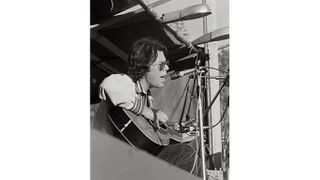
Stefan Grossman
A distinguished fingerstyle blues guitarist, Stefan Grossman gained early insights into the genre by studying with and documenting the music of Reverend Gary Davis. The 1960s folk and acoustic blues boom propelled Grossman’s performing career, which includes numerous album releases, co-founding Kicking Mule Records, writing a lessons column for GP, and producing instructional videos, making him a significant figure in acoustic blues education.
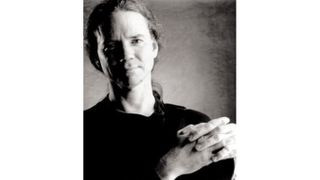
Michael Hedges
Michael Hedges became an iconic figure of the new age Windham Hill era and a lasting acoustic music icon. He pioneered and popularized the two-handed percussive guitar approach, influencing artists like Kaki King and Andy McKee. Hedges also brought the harp guitar into the spotlight and was known for his captivating and energetic live performances.
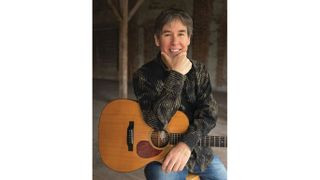
Pete Huttlinger
Pete Huttlinger, a crowd-favorite fingerpicker, captivated audiences from Carnegie Hall to Eric Clapton’s Crossroads festivals with his performances, ranging from delicate chord melodies to complex arrangements of pop songs. Before his untimely passing at 54, he left behind a rich catalog of exceptional steel-string recordings, preserving his musical legacy.
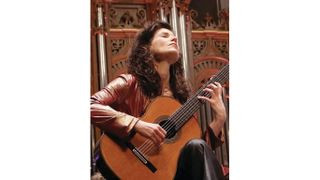
Sharon Isbin
Sharon Isbin, a past recipient of GP’s Best Classical Guitarist award, also holds multiple Grammy Awards and nominations. As the founder of the Guitar Department at Juilliard, Isbin has been instrumental in promoting classical guitar to broader audiences through collaborations with rock and jazz musicians, bridging genre boundaries and expanding classical guitar’s reach.
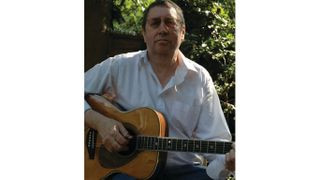
Bert Jansch
Bert Jansch’s distinctive fingerpicking style, blending blues, folk, and jazz, has influenced a diverse array of artists, including Al Stewart, Paul Simon, Johnny Marr, and Neil Young. This Scottish guitarist’s impact is undeniable; the influence of his “Blackwaterside” can be heard in Jimmy Page’s “Black Mountain Side,” cementing Jansch’s place among the Best Acoustic Guitar Players.
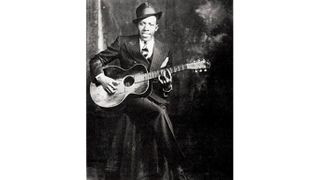
Robert Johnson
“No Robert Johnson, no rock and roll” encapsulates the profound impact of this masterful blues guitarist and singer-songwriter on modern music. His seminal tracks like “I Believe I’ll Dust My Broom,” “Sweet Home Chicago,” and “Love in Vain” demonstrate why so many rock music icons built upon the foundation Johnson laid, solidifying his legendary status.
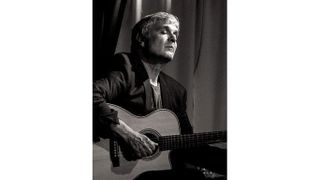
Laurence Juber
Laurence Juber, formerly of Paul McCartney’s Wings, is a celebrated fingerpicker who has carved a niche with his solo acoustic arrangements of Beatles tunes. Witnessing Juber simultaneously play melody and bass lines to classics like “Day Tripper” is a remarkable experience, enhanced by the warm tone of his signature Martin OM guitar, showcasing his unique talent.
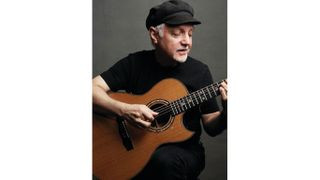
Phil Keaggy
With a solo career spanning over 40 years and 60 albums, gospel-oriented guitarist and vocalist Phil Keaggy has achieved significant popularity through his recordings and concerts. Keaggy incorporates loopers, EBows, and other effects into his fingerstyle playing, crafting richly textured music that inspires both audiences and fellow guitarists with its depth and innovation.
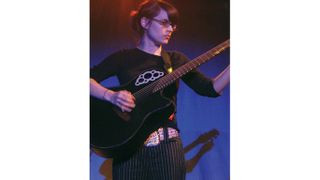
Kaki King
Kaki King, honored as GP’s Best Acoustic Guitarist in 2013, has captivated audiences for over a decade with her incredible two-handed tapping techniques. As a multi-instrumentalist, film composer, and multimedia artist, she continues to push the boundaries of musical expression and guitar performance, constantly evolving her artistry.
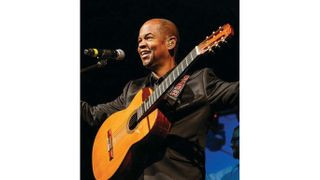
Earl Klugh
Earl Klugh emerged as a 17-year-old guitar prodigy on George Benson’s White Rabbit album. Following stints with Benson’s band and Chick Corea’s Return to Forever, Klugh embarked on a solo career in 1976. With dozens of albums to his name, Klugh continues to play nylon-string guitar with exceptional skill and taste, recognized as a living legend in contemporary jazz guitar.
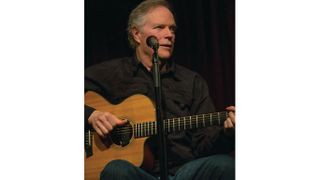
Leo Kottke
Perhaps the most influential acoustic guitarist of the last 50 years, Leo Kottke’s asymmetrical fingerpicking patterns, resonant lowered tunings, seamless integration of slide and fretted melodies, and dedication to both 6- and 12-string guitars revolutionized acoustic guitar music. He elevated the acoustic guitar from folk venues to concert halls, expanding its reach and prestige.

Leadbelly
Best known for songs like “Goodnight, Irene,” “Rock Island Line,” and “The Midnight Special,” Leadbelly (Huddie Ledbetter) began performing with Blind Lemon Jefferson around 1912. He primarily played a 12-string Stella guitar throughout his career. Despite facing serious legal challenges, his career persevered, and he significantly impacted America’s developing folk music scene, leaving a lasting musical legacy.
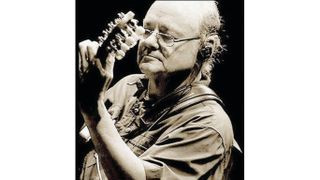
Adrian Legg
Adrian Legg, a British fingerstyle virtuoso, creates hypnotic solo pieces filled with pedal-steel-style bends and banjo rolls that defy easy categorization. Legg advises listening “outside the guitar” for inspiration, encouraging musicians to explore diverse musical influences. His unique approach and genre-blending style set him apart in the acoustic guitar world.
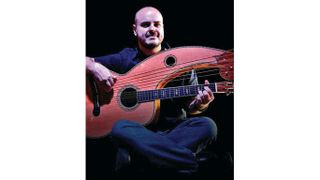
Andy McKee
Andy McKee, a modern acoustic guitar sensation from Kansas, drew inspiration from two-hand tapping and percussive techniques pioneered by Billy McLaughlin and Michael Hedges. Adding baritone and harp guitars to his repertoire, and utilizing Greenfield guitars, McKee became a global internet phenomenon through his captivating homemade videos, showcasing his innovative and visually stunning guitar performances.

John McLaughlin
John McLaughlin, a master of scales and improvisational spirit, boasts numerous acoustic highlights in his career. These include the legendary trio performances with Al Di Meola and Paco de Lucia captured on Friday Night in San Francisco, and his raga-inspired work with Shakti. McLaughlin’s acoustic explorations span from the Gibson J-200 to the Godin Multiac Fretless SA with synth access, demonstrating his wide-ranging musical curiosity and expertise.
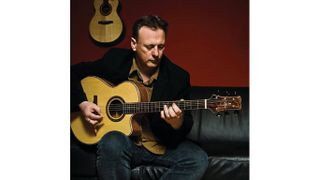
Tony McManus
Tony McManus is a leading figure in Celtic acoustic guitar music, renowned for his exceptional ability to capture the melodic nuances of traditional Celtic genres, including the sounds of fiddles and pipes. His solo performances are deeply evocative, and on his album Mysterious Boundaries, McManus even performs Bach’s “Chaconne in D Minor” on his signature PRS acoustic, showcasing his versatility and mastery across musical forms.
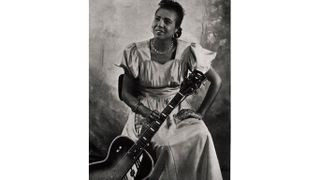
Memphis Minnie
Memphis Minnie, a self-taught blues guitarist, recorded over 200 songs and fearlessly showcased her talents in live performances and cutting contests with blues giants like Big Bill Broonzy and Muddy Waters. Minnie’s guitar legacy includes elegant fingerpicking, open tunings, and a powerful stage presence, marking her as a significant female figure in blues history.
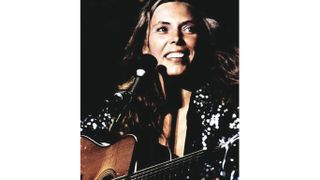
Joni Mitchell
Joni Mitchell’s boundless creativity and inquisitive nature have driven her to develop unique fingerpicking patterns, unconventional and beautiful tunings, and innovative capoing techniques. These elements serve her often transcendent songwriting, which has evolved from folk to rock, jazz, and beyond, constantly pushing musical boundaries and genres.
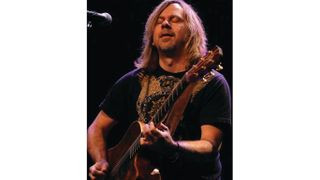
Monte Montgomery
Monte Montgomery, an Austin-based guitar slinger, pushes the sonic and structural limits of piezo-pickup-equipped dreadnought guitars. He demonstrates that acoustic players can effectively utilize compression, distortion, feedback, and dramatic neck-bend vibrato. Drawing comparisons to Lindsey Buckingham and Jimi Hendrix, Montgomery’s live performances are explosively energetic and unforgettable.
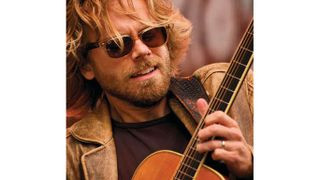
James Nash
Whether playing a Santa Cruz acoustic or a Fender Strat, James Nash is an exceptional guitarist known for delivering high-energy solos on acoustic guitars. His improvisational freedom stems from deep musical knowledge and extensive experience as a bandleader, sideman, and solo performer, making him a versatile and dynamic musician.
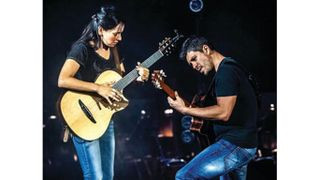
Gabriela Quintero and Rodrigo Sanchez
Under the name Rodrigo y Gabriela, Gabriela Quintero and Rodrigo Sanchez form one of the most electrifying acoustic guitar duos globally. Their music blends flamenco, rock, metal, and jazz, incorporating effects like wah, Whammy, and distortion pedals on nylon-string guitars. Their performances are characterized by blazing runs and percussive rhythms, creating an uplifting and mind-blowing musical experience.
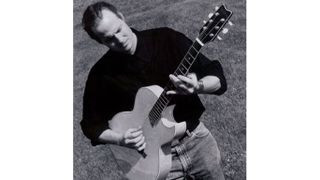
Preston Reed
Preston Reed’s percussive, two-handed guitar style has been profoundly influential in the acoustic scene, and his complex compositions clearly illustrate why. His seemingly impossible ability to simultaneously manage chords, melodies, and polyrhythmic grooves creates mini-orchestral presentations that span numerous musical styles, showcasing his innovative and multifaceted approach to acoustic guitar.

Django Reinhardt
Gypsy jazz guitarist Django Reinhardt revolutionized jazz guitar with his powerful picking style, which allowed him to stand out even against two rhythm guitarists. Playing a Maccaferri-designed Selmer acoustic guitar, Reinhardt overcame a hand injury that left him with only two functional fingers on his left hand. Despite this challenge, he played blistering, passionate jazz solos that rivaled those of five-fingered players, marking him as a true innovator.
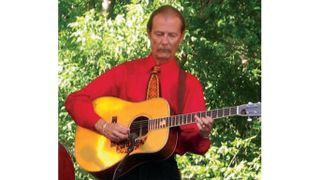
Tony Rice
Tony Rice fused bluegrass with jazz to become the defining guitarist of the newgrass era. His groundbreaking work with the David Grisman Quintet pushed beyond traditional bluegrass boundaries. Rice’s decision to order his first custom dreadnought from Santa Cruz Guitars marked the beginning of the boutique guitar builder boom, highlighting his influence on guitar design and sound.
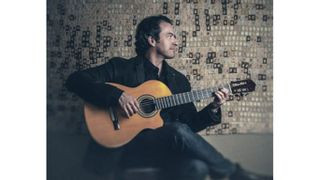
Lawson Rollins
Lawson Rollins is known for his incredibly fast nylon-string guitar playing. Watching Rollins perform rapid arpeggios and scales using the classical “picado” fingerstyle technique is captivating and mesmerizing. A YouTube star, Rollins continues to gain international recognition for blending various Latin styles into his distinctive musical fusion.
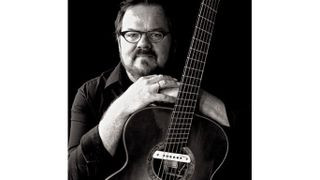
Don Ross
Don Ross, who describes his style as “heavy wood,” blends blues, folk, jazz, and classical influences to create a unique sound. A fluid and inventive player, his percussive rhythmic style propels his music with remarkable energy. Ross is a two-time winner of the National Fingerstyle Guitar Championship, underscoring his exceptional talent and contribution to fingerstyle guitar.
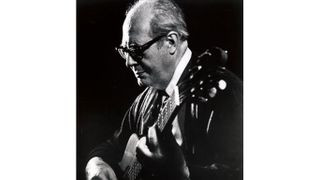
Andres Segovia
For many, Andres Segovia is synonymous with classical guitar itself. In the early to mid-20th century, he was instrumental in establishing the classical guitar as a serious concert instrument, comparable to the piano and violin, and deserving of its own classical repertoire. Segovia’s dedication and artistry elevated the status of classical guitar worldwide.
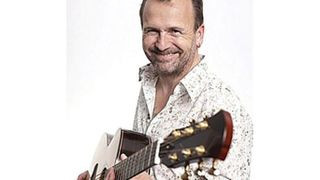
Martin Simpson
Martin Simpson is recognized as one of the world’s finest fingerstyle and acoustic slide guitarists. He masterfully combines music from the British Isles, American blues, and other “old-time” influences, all infused with his captivating technique and rich tones from his signature PRS acoustic guitar. Whether performing solo or with a group, Simpson consistently delivers magical musical experiences.
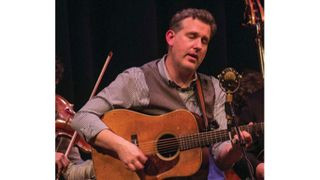
Bryan Sutton
Bluegrass flatpicker Bryan Sutton has been honored with the IBMA’s “Guitar Player of the Year” award ten times. Sutton’s dreadnought playing is deeply rooted in melody and tradition, yet he fearlessly embraces improvisation. He continues to innovate within bluegrass guitar, building upon the foundations laid by Tony Rice and Charles Sawtelle, whom he succeeded in Hot Rize, showcasing his prominent role in contemporary bluegrass.
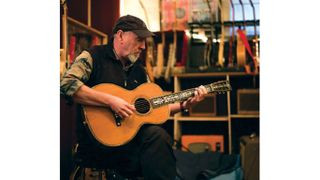
Richard Thompson
Richard Thompson often incorporates the same distinctive bends on his signature light-strung Lowden acoustic guitar that he uses on electric guitars. His exceptional thumb and finger independence allows him to create a sound that is far richer than a single guitarist should produce, blending jazz, Celtic folk, country, blues, and 20th-century classical music into a unique and compelling style.
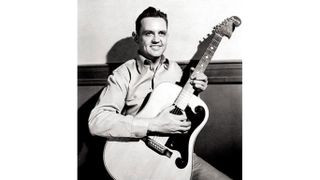
Merle Travis
Travis picking, named after the influential thumbpick-and-index-finger style of Merle Travis, remains eternally popular, as evidenced by virtuosos like Tommy Emmanuel and Brian Setzer. Chet Atkins eloquently described Travis’s immense influence, stating, “I’d probably be looking at the rear end of a mule if it weren’t for Merle,” highlighting Travis’s foundational impact on guitar playing.

Doc Watson
Doc Watson, a master of both flatpicking and fingerstyle guitar with an extraordinary sense of melody and rhythm, significantly influenced folk and bluegrass music in the early 1960s. His recordings and performances inspired countless guitarists to explore the intricacies of his playing, establishing Doc Watson as a defining figure in bluegrass guitar and a lasting influence on acoustic music.

Xuefei Yang
Xuefei Yang’s remarkable talent as a classical guitarist has led to a series of significant achievements. She was the first Chinese guitarist to enter a music school, the first Chinese musician to receive a full scholarship to London’s Royal Academy of Music, and the first Chinese guitarist to achieve global renown. Yang’s pioneering career has paved the way for future generations of classical guitarists from China and beyond.
